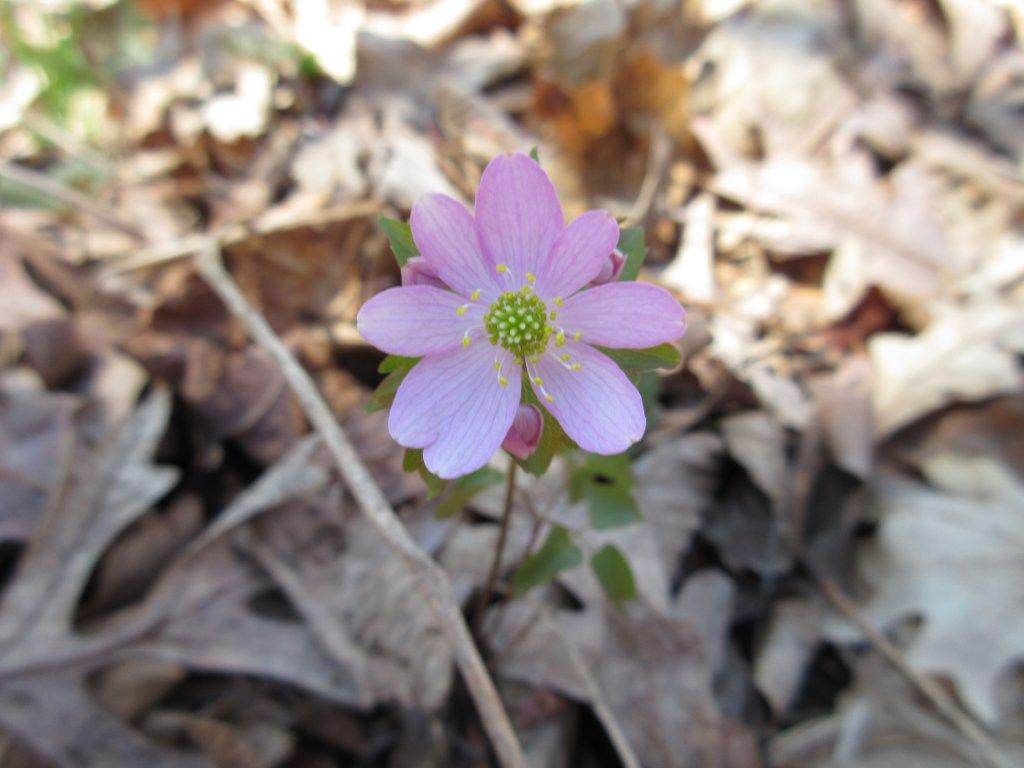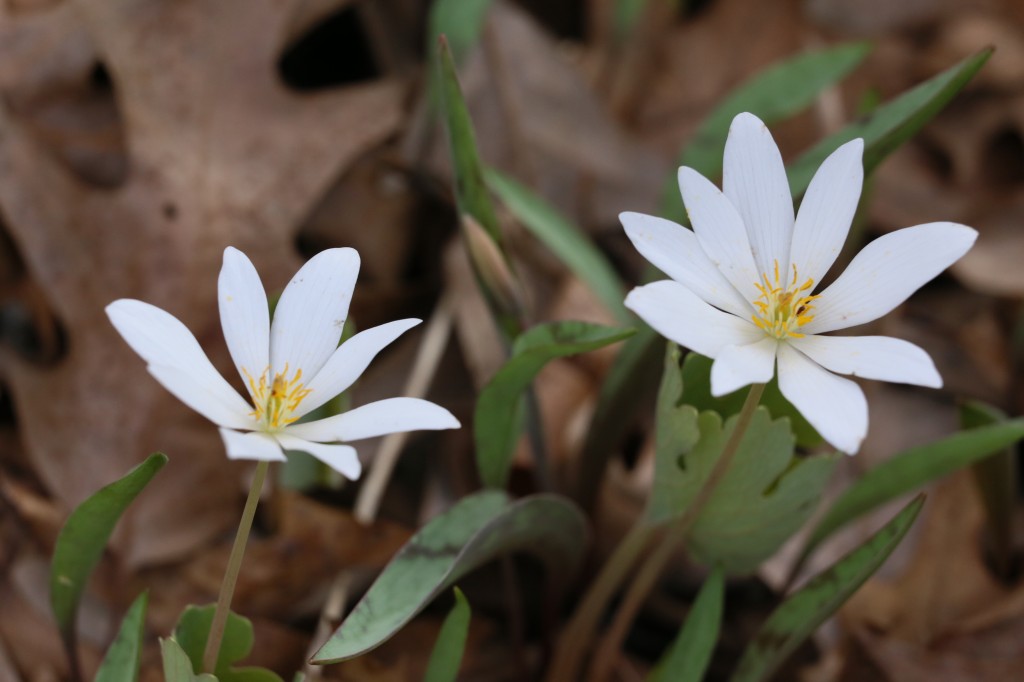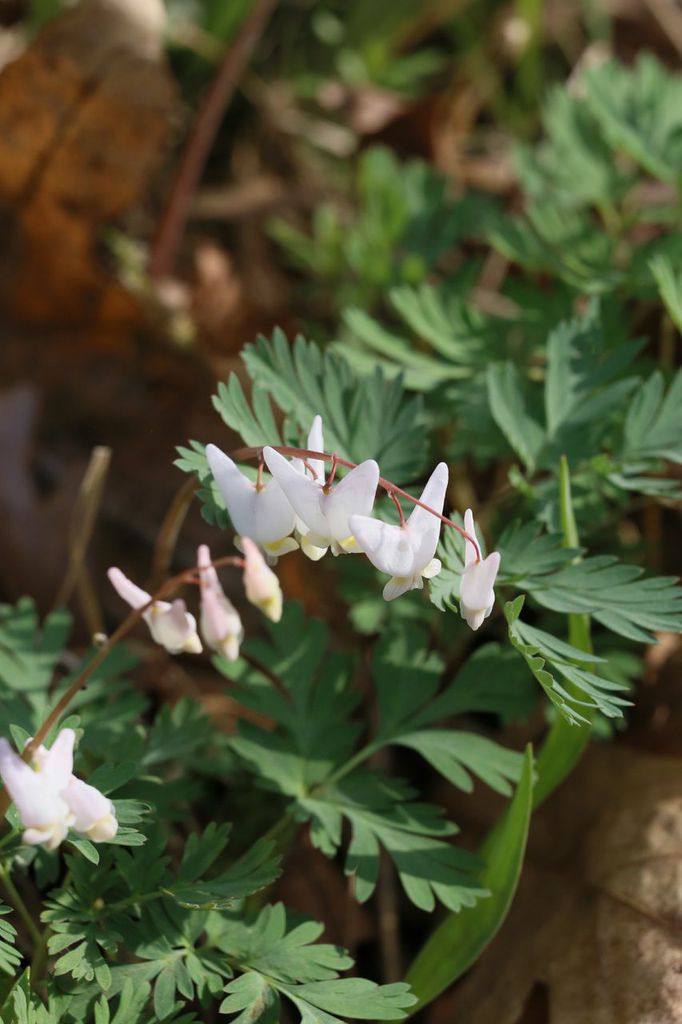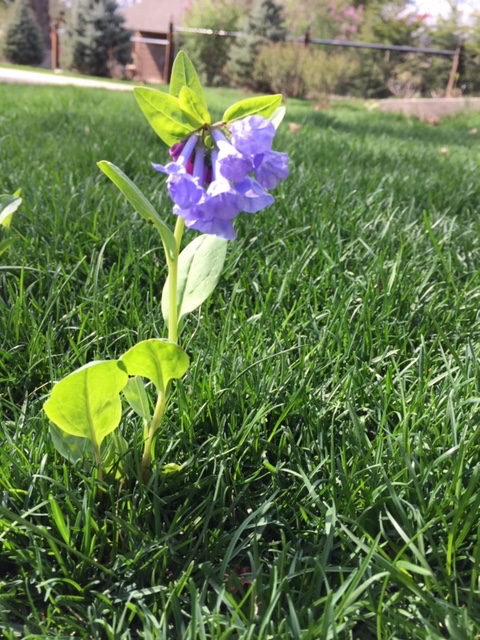What's in Bloom: Woodlands
By Catherine Wilson on May 1, 2015 in Blog
This is our second installment of “What's in Bloom.” From time to time, INHF volunteer Catherine Wilson will let you know about native plants that are in bloom around Iowa.
May is Iowa Wildflower Month! The Iowa Prairie Network has a calendar of events throughout the month designed to introduce Iowa’s woodland and prairie wildflowers. To get a head start, check out what’s blooming in the woodlands:

The hardiness of the Rue anemone originates in its thick tuberous root system that allows for a rapid start each spring. These beauties are difficult to transplant and should be allowed to thrive in their natural habitats. Photo by Mary Runkel.
Rue anemone (Anemonella thalictroides) blooms on dry, open slopes during March through June. It is also called an anemone or windflower. The flowers bloom on individual stalks with two or three flowers in each cluster. The flowers have 5-10 petal-like sepals which provide a shallow saucer-like formation with several yellow-green stamens in the center. These hardy flowers' strength originates with its thick tuberous root system that allows for a rapid start each spring. As hardy as the root system appears, the flowers are difficult to transplant and should be allowed to thrive in their natural habitats. Though no medicinal uses have been found for the Rue anemone, the tubers were gathered by early settlers and Native Americans as a food source.

Though used by Native Americans to treat warts, ringworm, eczema and cancerous growths, the rootstock of the Bloodroot is poisonous and should be treated cautiously. Photo by Steve Peterson.
Bloodroot (Sanguinaria canadenis) is found in small clusters and grows 6-14 inches tall in rich, moist soil when shaded by tree foliage. This single, intricately designed white flower usually has eight petals and grows from a single stock that is taller than its leaves. The rust-colored rootstock is poisonous and contains alkaloids closely related to morphine. The root grows to one-inch diameter and when cut, a red juice-like liquid coagulates to protect the wounded area. Other common names are corn root, pain ease, red Indian paint, sweet slumber and red puccoon. Indians made tea from the roots to relieve stomach cramps and to bathe burns. It was also used externally on warts, ringworm, eczema and cancerous growths. The juice was also used to die fabrics, tools and body paint.

Dutchman’s breeches combine fern-like leaves with a long, elegant stalk, which yield four to ten “breeches” shaped flowers. Though striking in appearance, the roots of the Dutchman’s breeches are poisonous. Photo by Steve Peterson.
Dutchman’s breeches (Dicentra cucullaria) bloom in April and May in medium to moist woodland areas. Other common names are boy britches, butterfly banners, colic weed and white hearts.Though the flowers are very attractive and distinctive, the roots contain toxic alkaloids and are poisonous. Smooth slender stems grow to a height of 4 to 12 inches from a common, ground-level point. Each stem is topped with a smooth leaf divided into three sections that results in a fern-like appearance. The almost elegant stalk towers several inches above the leaves and bears 4 to 10 white clusters—each with a “breeches” appearance—and attach to one side of the stalk. Early American pioneers used this flower to treat urinary conditions and as a salve for skin afflictions. Find these beauties clustered beneath trees during your woodland walk.

Virginia bluebells have loose groupings of tubular pink buds which mature and open into porcelain blue trumpet-shaped flowers that exhibit a five-pleated flare. Photo by Catherine Wilson.
Virginia bluebells (Martensia virginica) dot the rich, moist soil of the Midwest from March through May and were named for the German botanist, Franz Karl Mertens. Though also known as the tree lungwort because European settlers thought they resembled a similar looking flower used to cure lung disorders across the Atlantic, the Virginia bluebells were not found to have any medicinal impact. The fragile stem of the Virginal bluebell can grow up to 2 feet in height and may be singular or branched with leaves alternating along the shaft. Loose groupings of tubular pink buds mature and open into porcelain blue trumpet-shaped flowers that exhibit a five-pleated flare. The drooping characteristic of the flowers and the length of the tube make it difficult for bees to reach the nectar, so bees sometimes perforate the tube rather than obtain the nectar in the usual manner.
